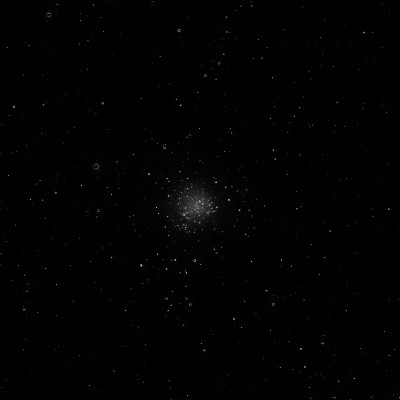
William Herschel discovered NGC 6712 = H I-47 = h3762 on 16 Jun 1784 (sweep 228) and recorded "B, vL, easily resolvable, with many stars visible in it; of an irregular form." John Herschel made a single observation on 27 May 1831 (sweep 591): "globular cluster; pL; F; R; rather irreg; vglbM; 6' or more in diam; all resolved. A fine object, the stars being very close and numerous."
200/250mm - 8" (7/24/82): grainy, very lively but only a few stars resolved over haze at high power. Strong impression that in excellent seeing or a bit more aperture would resolve more fully.
300/350mm - 13.1" (7/27/84): about 15 stars resolved including several extremely faint stars, very mottled, ragged edges, non-symmetric (flattened on the southeast side).
400/500mm - 17.5" (6/29/00): at 220x this is a bright, moderately large cluster, ~6' diameter in a very rich Milky Way field. Contains a relatively large, intense 3' core with a number of very faint stars peppered over the background glow. A small, partially resolved piece is detached at the southeast end by a dark lane. The surrounding halo includes a number of brighter stars, though it is difficult to untangle the maze of stars in the halo from the rich Milky Way background. Roughly 30 stars are resolved at 280x, although it is difficult to accurately count. The core has irregular appearance with a flattened side caused by a sharp light cut off on the south side. PN IC 1295 lies 24' ESE.
17.5" (7/1/89): about two dozen stars resolved over haze. A very rich clump is visible at the west side and a detached clump is at the southeast end. The outline is irregular.
600/800mm - 24" (8/12/15): at 450x (10mm ZAO + 2x Powermate); nearly fills 5' field, excellent resolution over the entire surface with well over 50 stars resolved. A dense group of easily resolved stars is on the west side of the halo. A large number of fainter resolved stars is also on the south side. The outer halo was ragged and straggling, with no distinct border but shot with numerous stars. A well resolved, detached elongated section (separated by a lane) is on the south and southeast side of the halo. Set in a beautiful low power field with planetary nebula IC 1295 24' ESE. Observation at 8600 ft in excellent transparency in the White Mountains.
Notes by Steve Gottlieb